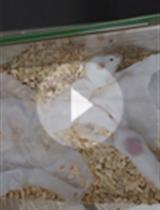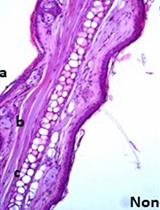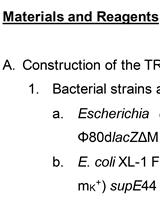- EN - English
- CN - 中文
Mouse Models of Uncomplicated and Fatal Malaria
无并发症和致命疟疾的小鼠模型
(*contributed equally to this work) 发布: 2015年07月05日第5卷第13期 DOI: 10.21769/BioProtoc.1514 浏览次数: 16166
评审: Migla MiskinyteAnonymous reviewer(s)
Abstract
Mouse models have demonstrated utility in delineating the mechanisms underlying many aspects of malaria immunology and physiology. The most common mouse models of malaria employ the rodent-specific parasite species Plasmodium berghei, P. yoelii, and P. chabaudi, which elicit distinct pathologies and immune responses and are used to model different manifestations of human disease. In vitro culture methods are not well developed for rodent Plasmodium parasites, which thus require in vivo maintenance. Moreover, physiologically relevant immunological processes are best studied in vivo. Here, we detail the processes of infecting mice with Plasmodium, maintaining the parasite in vivo, and monitoring parasite levels and health parameters throughout infection.
Keywords: Mouse (小鼠)Materials and Reagents
- Mice. We perform most of our work in C57BL/6 mice due to the wide availability of transgenic and knockout strains on this genetic background. Slight differences in vendor-specific sub-strains exist, so it is preferable to obtain the mice from the same source throughout a given study. The majority of our studies use 9-12 week old females, since males have higher parasite loads and mortality with P. chabaudi infection in many mouse strains (Laroque et al., 2012).
- Plasmodium parasites. Plasmodium parasites can be obtained from the Malaria Research and Reference Reagent Resource (MR4). The most commonly used rodent malaria strains include P. chabaudi AS (MRA-429; used to model uncomplicated malaria), P. berghei ANKA (MRA-311; fatal cerebral malaria), P. yoelii 17XNL (MRA-593; uncomplicated malaria; resolves late relative to P. chabaudi), and P. yoelii YM (MRA-755; lethal malaria without cerebral pathology).
- Immersion oil Type A (Cargille, catalog number: 16482 )
- Methanol (Thermo Fisher Scientific, catalog number: A412P4 )
- Giemsa stain (Acros Organics, catalog number: 295591000 )
- 1x PBS (Mediatech Inc., catalog number: 21-040 CV )
- Alsever’s solution (MP Biomedicals, catalog number: 092801154 ) (see Recipes) (Note 1)
Equipment
- 1 ml syringes (BD, catalog number: 309628 )
- 25 g ⅝” needles (BD, catalog number: 305122 )
- 25 mm x 75 mm x 1 mm unfrosted glass slides (Premiere, catalog number: 9101-E )
- 25 mm x 75 mm x 1 mm frosted glass slides (Globe Scientific Inc., catalog number: 1324W )
- Slide staining rack and chamber (Electron Microscopy Sciences, catalog number: 62543-06 and 62541-01 )
- Glass cutter (optional) (General, catalog number: 06637383 )
- 1.5 ml microfuge tubes (Thermo Fisher Scientific, catalog number: 50809238 )
- Sharp surgical scissors
- Brightfield microscope equipped with 100x objective
- Lens paper (Thermo Fisher Scientific, catalog number: 11-995 )
- Lamellar flow hood (optional; if working in a pathogen-free animal facility)
- Scale with cup for weighing mice (OHAUS, catalog number: SB36853M )
Software
- VersaCount (Kim and DeRisi, 2010)
Procedure
文章信息
版权信息
© 2015 The Authors; exclusive licensee Bio-protocol LLC.
如何引用
Huang, B. W., Pearman, E. and Kim, C. C. (2015). Mouse Models of Uncomplicated and Fatal Malaria. Bio-protocol 5(13): e1514. DOI: 10.21769/BioProtoc.1514.
分类
微生物学 > 微生物-宿主相互作用 > 体内实验模型 > 哺乳动物
您对这篇实验方法有问题吗?
在此处发布您的问题,我们将邀请本文作者来回答。同时,我们会将您的问题发布到Bio-protocol Exchange,以便寻求社区成员的帮助。
Share
Bluesky
X
Copy link














